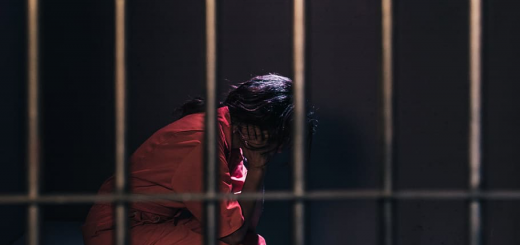The National Conference on the Charter and Criminal Justice
Last Saturday, September 29th, Osgoode Hall Law School’s Professional Development Centre was the site of an important and timely Continuing Legal Education symposium, the proceedings of which may be of considerable interest to readers of TheCourt.ca.
The conference, organized by Osgoode professors Jamie Cameron and James Stribopoulos (who also serves as Editor-in-Chief of TheCourt.ca), offered presentations by a veritable “who’s who” of Canadian criminal law practice and academia. Entitled The National Conference on the Charter and Criminal Justice in Canada, the meeting provided a platform for an array of divergent opinions on the place of the Charter within the past, present and future of our increasingly complex criminal justice system.
It should come as little surprise to readers that twenty-five years after the entrenchment of the Charter‘s legal guarantees, the substantive and procedural implications of those guarantees are still very much open to debate. While each presenter offered their own uniquely valuable insight, for editorial reasons the following review provides a synopsis of only a select group of the conference’s concurrent panels. Should interest arise, readers may wish to contact the Osgoode Professional Development Centre for further information regarding panelists and conference materials.
The day’s opening panel, which was chaired by Justice Todd Ducharme, provided a solid groundwork for a number of the meeting’s key issues and featured compelling presentations by Professors Alan Young, Don Stuart, and David Paciocco.
Professor Young got the ball rolling by acknowledging that while the Charter has no doubt had a significant positive impact on both criminal procedure and the development of defences, we are witnessing an undesirable parallel growth in legislation of redundant and ill-defined offences fueled by the proliferation of self-serving “tough on crime” political platforms.
Professor Stuart was likewise concerned with the “law and order” political agenda of Parliament, but suggested, however, that such an agenda has crept into judicial decision-making as well. Stuart expressed particular alarm about the exercise of discretion under s. 24(2) which has occasionally resulted in the judicial creation of a “Charter-free zone” when dealing with evidentiary concerns in serious criminal offence trials.
Expanding upon the discussion of evidence, Professor Paciocco argued that, despite the view of critics, the realm of criminal law procedure has been an exceptionally fertile ground for the advancement of rights since 1982. Moreover, Paciocco asserted that, owing to the inherent overbreadth and overinclusiveness of rules, procedural concerns are rightly the province of the judiciary.
On a panel on Detention and Arrest, Professors James Stribopoulos and Steve Coughlan had a lively discussion with Justices Casey Hill and Maureen Forestell (who served as panel Chair) about problems arising from the lack of Supreme Court s. 9 jurisprudence. They included in this list the vague constitutional standard for detentions, the lack of guidance regarding whether “lawfulness” must ground a detention, and the criminal justice system’s failure to track the impact of investigative detention on street-level encounters.
Professors Stribopoulos and Coughlan presented the history of s. 9 as an exception to the many positive changes that have occurred in criminal procedure as a result of the Charter. Whereas Coughlan attributed the lack of jurisprudence partially to the transplanting of a definition of “detention” from s. 10 jurisprudence, Stribopoulos identified the purpose of s. 9 as the protection of individual liberty from unjustified state interference, which would, he suggested, seem to require that unlawful detentions necessarily violate s. 9.
For his part, Justice Hill presented an interesting solution to the s. 9 problem, suggesting that if detentions were characterized as seizures it would trigger the higher standard of “reasonable and probable grounds to believe”, as well as place the burden on the Crown to demonstrate the reasonableness of the seizure.
In response to the concerns raised by the panelists, an attendee who is a member of the judiciary candidly explained the effects of s. 9 case law on the judicial decision-making process, suggesting that when faced with a lack of clarity in the jurisprudence, judges resort to an “I-know-it-when-I-see-it” approach to the standard for detention. Ultimately, everyone agreed that a clear statement of purpose for s. 9 from the Supreme Court would eliminate the need for such work-arounds.
In a thought-provoking panel on Search and Seizure chaired by Anil Kapoor and featuring presentations by Crown prosecutor Michal Fairburn, defence lawyer Scott Hutchinson and the Department of Justice’s Croft Michaelson, conference attendees were presented with a number of perspectives on the historical and conceptual development of the guarantee against unreasonable search and seizure under s. 8 of the Charter.
Scott Hutchinson spoke first, providing the audience with the conceptual development of “privacy expectations” under s. 8, dividing this trajectory along three “generational” stages. Hutchinson also offered the audience a valuable point of comparison by contrasting the Canadian approach to privacy under s. 8 with that found under the U.S Constitution’s 4th Amendment. Hutchinson concluded by briefly considering the nature of search when dealing with electronic media such as computers and blackberrys.
Michaelson, for his part, was largely concerned with the manner is which the SCC had defined the expectation of privacy in generalized and normative terms in cases such as R v Duarte, [1990] 1 SCR 30. He forcefully argued that such an approach does a great disservice to both police and prosecutors, specifically in the case of illicit drug trafficking. In Michaelson’s eyes, the question that must be asked is not whether Canadians ought to be reasonably able to expect that their conversations will not be intercepted by government, but whether individuals in specific circumstances (such as drug transactions) can reasonably be said to have such an expectation of privacy. To this end, Michaleson pointed to and applauded the totality of the circumstances test laid out in R v Edwards, [1996] 1 SCR 128.
Michal Fairburn nicely concluded the Search and Seizure panel by focusing upon the nature and role of legislation under section eight of the Charter. Pointing to the staggering number and complexity of various search authorization provisions in the Criminal Code, including those dealing with regular warrants, general warrants, tracking warrants, impression warrants, DNA warrants, among others, Fairburn concluded that it is in the best interests of everyone to collapse such provisions into one large and comprehensive warrant provision. Ultimately, it was suggested by one of the panelists that doing so could greatly help to diminish the sense of uncertainty and potential disdain experienced by police when confronting such a confusing set of legislated provisions.
Finally, the conference concluded with a presentation by Professor Kent Roach, who provided the audience with nine measures with which to evaluate the health of our current criminal justice system. Perhaps what was most striking about Professor Roach’s talk, however, was a comment that he made at its very beginning. Reflecting back upon the past year, during which time Roach had attended a number of similar conferences celebrating the Charter‘s 25th anniversary, he revealed that he was struck by the somber mood that characterized much of the discourse. Seen through the lens of similar celebrations only five years ago, Roach suggested that we may be witnessing nothing less than a diminished enthusiasm for the performance of the courts under the Charter and possibly for the Charter itself.







Join the conversation